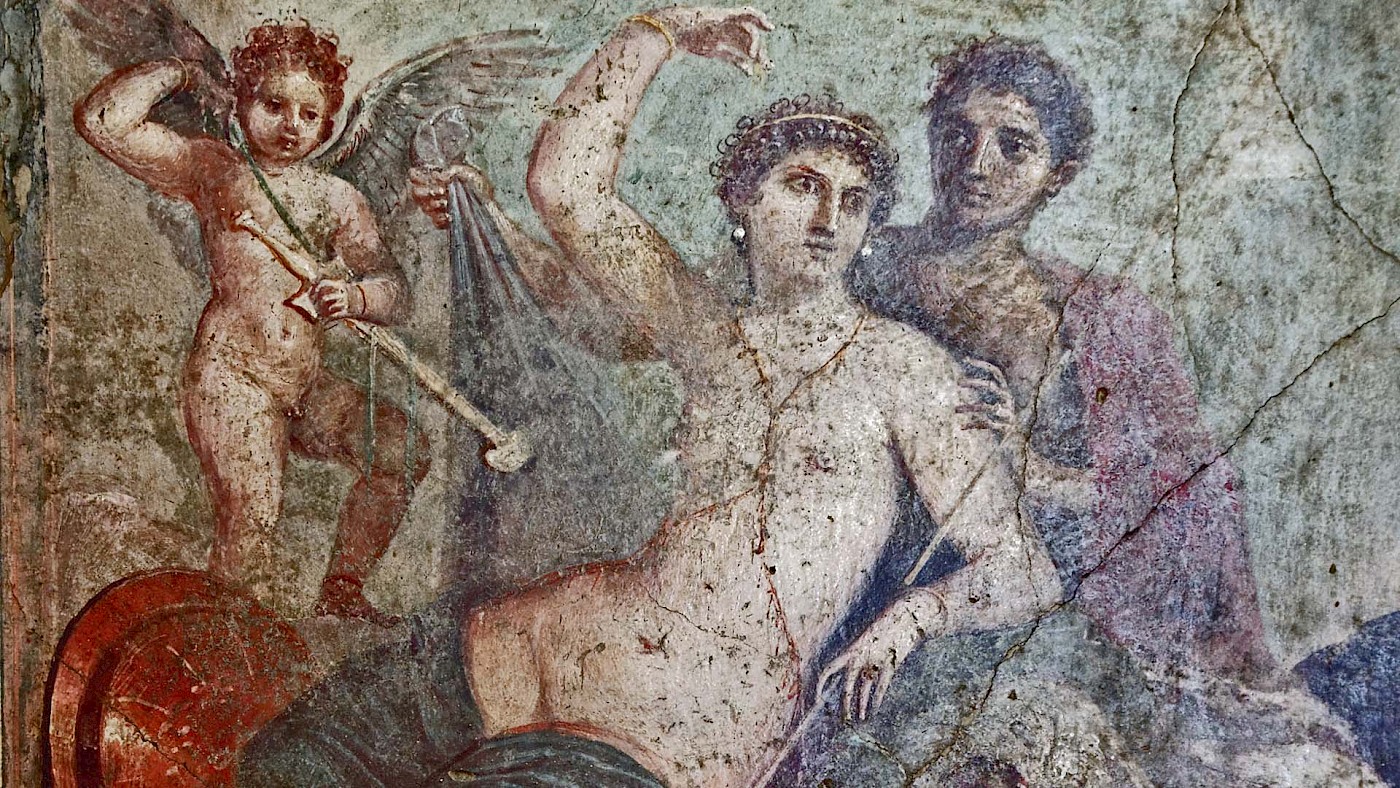While editing a new translation (in Dutch) of the Roman poet Catullus (available here, if you’re curious), I came across the Salii, which the translator rendered as “jumping priests of Mars”. I wondered who they were and how they came to be known by such a highly descriptive and odd name, and I figured that the results of my brief foray into an odd corner of Roman religion would be of interest to readers here, too.
As you are no doubt aware, in the ancient world, most religions were polytheistic, i.e. people worshipped a variety of different deities. Each god and goddess usually had a temple, shrine or other holy place, and their needs were catered to by a wide array of different priests and priestesses. Some of these priesthoods were quite specialized.
Mysterious origins
The Salii, or “Jumpers”, are perhaps one of the more peculiar, specialized priesthoods. The Salii were supposedly created by Numa, a legendary early king of Rome (e.g. Livy 1.20), although others claim that the priesthood originated from Greece and may have been founded by Salius, an Acarnanian who had accompanied the Arcadian king Evander to Italy. He makes an appearance in the fifth book of Virgil’s Aeneid, where he takes part in the funeral games held for Aeneas’ father, Anchises. He is ultimately killed in combat in book 10 of the epic poem.
There were different groups of Salii. Livy mentions the Salii Palatini and the Salii Collini (1.27), who eached consisted of a collegium (a sodality) of twelve individuals. The ones on the Palatine were dedicated to Mars, the ancient Roman god of war. He was not a one-to-one counterpart of the Greek Ares, since he was also a fertility god associated with agriculture. The latter is not too surprising, since ancient wars were often fought over the control of arable land.
As regards the Collini, their name is derived from the Latin collis (hill), and probably refers to the Quirinal Hill, another of the seven hills in Rome, which was associated with Quirinus. This was a very ancient god associated with the spear, and perhaps another god of war.
Jumping around
The Salii were renowned for their springing, “three step” dances, which they performed in processions. Processions were an important way to draw the attention of large crowds to ritual proceedings, especially since the procession often ended at a sacred precinct, where the crowd could expect to get some meat to eat after the proper sacrifices and rituals had been concluded. Technically, of course, processions were intended to appease the deities.
As is to be expected, the Salii were most active in March, the month named after Mars, which marked both the beginning of the agricultural season as well as the campaigning season. They took part in a variety of rituals, including their particular dance. The priesthood was supposedly an ancient one, which explains why the these priests carried large shields around in the form of a figure 8, which were regarded as archaic. (For archaeological examples, see Guidi 2009.) During their processions and dances, these “warrior-priests” would bang the shields with swords or staves.
Exactly why the Salii performed a “three step” dance is unknown. However, dancing and fighting appear closely connected in the Classical world: the ancient Greeks could refer to a battlefield as the “dancing floor of Ares” and so-called “Pyrrhic dances”, in full armour, are encountered in texts and art. Armed dances have also been detected in Etruscan iconography and may have played important roles in a number of social situations, such as at funerals or, perhaps, before or after an actual war. Like a good dancer, a good combatant must be able to exercise fine control over his body, which is how the association perhaps came about in the first place. Since the Salii are associated especially with younger people, the practice may have originated in some kind of initiation ritual, too.
In any event, the priesthood was open exclusively to members of patrician or noble families, even after the reforms of the fourth century BC. Both men and women could be appointed to the Salii at an early age. Julius Caesar (100–44 BC), the famed general and dictator, served as a Salius when he was a boy. The priests were supposed to retire when appointed to a higher office, as no doubt Caesar did when he started to climb (jump?) the ancient Roman career ladder.
Further reading
- J.P.V.D. Balsdon, “The Salii and campaigning in March and October,” Classical Review 16.2, pp. 146-147.
- A. Guidi, “Aspetti della religione tra la fine dell’Età del Bronzo e la I Età del Ferro”, in: L.D. Troccoli, Il Lazio dai Colli Albani ai Monti Lepini tra preistoria ed età moderna (2009), pp. 143-151.
- R.E.A. Palmer, The Archaic Community of the Romans (1970).
- J. Rüpke, Pantheon: A New History of Roman Religion (2018).
- F.W. Walbank et al. (eds), The Cambridge Ancient History, voume VII, part 2: The Rise of Rome to 220 BC (second edition, 1989).
Useful, too, and quite extensive, is the entry for “Salii” in William Smith’s old A Dictionary of Greek and Roman Anqituities (1890), which is available in its entirety on the Perseus website.
